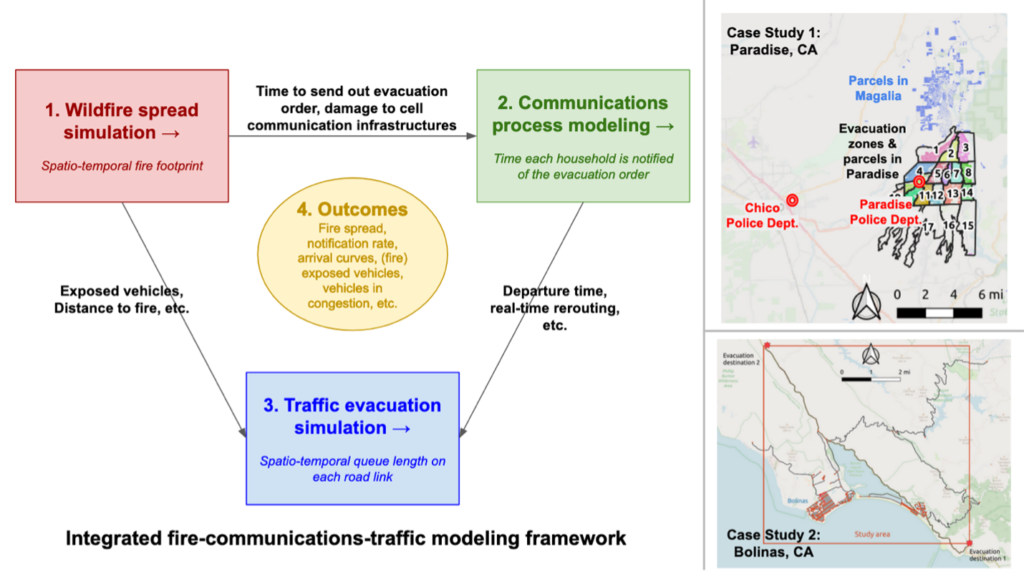A new technical report is recently completed by the Soga Research Group highlighting the socio-technological challenges faced by California communities in wildfire evacuations. In this interdisciplinary effort, a team formed by researchers in wildfire simulations, communication process modeling, and traffic simulations, worked closely with community partners to identify and reconstruct realistic evacuation scenarios for the two case study areas in Bolinas and Paradise, CA. A set of evacuation scenarios and strategy options are tested for these case studies, such as fire ignition locations, communications infrastructure functionalities, fire-induced road closure probabilities.
A key contribution of this report is the integration of wildfire, communications, and traffic modeling into wildfire evacuation analysis. This extends the boundaries of previous simulation modeling work by including complex and dynamic factors that come beyond traffic management in the evacuation process. For example, by identifying the available options that can be used to notify the residents of the evacuation order, an upper bound can be determined regarding the number of residents that can be notified. If, for instance, the cell communication infrastructure is damaged in certain wildfire scenarios, the notification rate will drop and affecting the overall departure time of vehicles in the traffic simulations.
Through extensive scenario analysis, several recommendations are made for future evacuation planning. These include:
- Evacuation plans should recognize the diverse hazard scenarios associated with the randomness and rapidity of the wildfire. Fast-moving fires can frequently lead to no-notice evacuations without sufficient time to execute pre-planned evacuation strategies;
- Damages to the communications system should be considered, especially for communities with low redundancy in the evacuation order dissemination system, or those that rely on regional collaborations. Actions such as sending out evacuation orders, coordinating contraflow operations, and adjusting signal timing along the evacuation route may not be easily achievable with disruptions to the communications infrastructure;
- The effectiveness of evacuation strategies is context-specific. As a result, if resource permits, dedicated investigations, modeling analysis, and drills should be carried out to identify local bottlenecks and characteristics.
The project is funded by the University of California Institute of Transport Studies (UC-ITS) Statewide Transportation Research Program (STRP). The funding comes from the State of California through the Road Repair and Accountability Act of 2017 (SB 1) and the Public Transportation Account (PTA). The report has been submitted to the UC-ITS and the full text will be available at https://escholarship.org/uc/item/1z913878. The preprint can be accessed at https://berkeley.box.com/s/5az4pnrq4wxs98zr719nh7ovcq5j5rxw.
